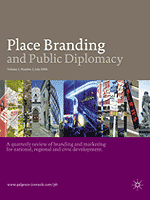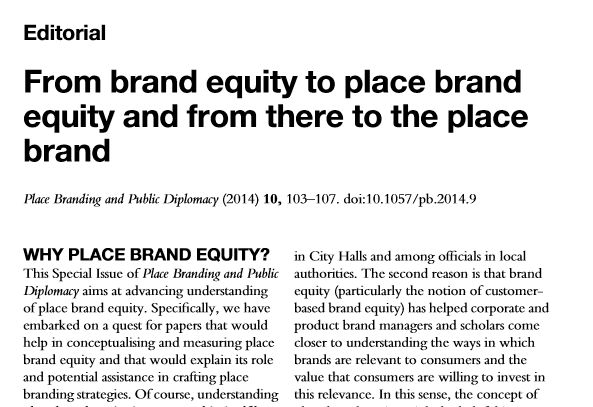Place brand equity: a concept gaining importance, and the focus of a recent editorial by Magdalena Florek and Mihalis Kavaratzis for the Journal of Place Branding and Public Diplomacy. But what exactly does place brand equity stand for, why does it matter and how can it be measured? Questions we asked Magdalena in our recent interview.
Why measure place brand equity?
 Magdalena Florek: There is an urgent need for place branding to be measured. To measure seemingly as unmeasurable and complex things as places is an act of bravery and a very difficult step to take (or impossible according to many experts and researchers).
Magdalena Florek: There is an urgent need for place branding to be measured. To measure seemingly as unmeasurable and complex things as places is an act of bravery and a very difficult step to take (or impossible according to many experts and researchers).
Still, we should be looking for possibilities of measuring the effects of the place marketing concept. To date, we have evaluated them on an ad hoc basis, which is not enough, nor does it provide an answer to the question “does place branding work?”
We need to know the sources of the rather enigmatic word “success” for places and to identify what it is and if it is successful.
In my opinion, brand equity has proven to be a concept that has helped all sorts of managers and brand owners to understand the value of brands to consumers.
Why focus on brand equity?
Magdalena: I think brand equity is a category capable of catching the complexity of place brands as it might capture the diverse and multiple aspects of place performance. By this I mean consumer-oriented brand equity.
I define brand equity as the differentiating effect of the set of associations and attitudes, as well as patterns of behavior toward a place brand, triggered off by place marketing.
Which indicators do you propose for measuring place brand equity?
M: For brand equity to perform its strategic functions and to set the directions for marketing decisions, we need to identify the sources of brand equity and their impact on the desired results, followed by an indication of how an evaluation of the results (and possibly the source of brand equity) change over time.
An indication of these sources, coupled with an evaluation of brand equity, gives grounds for interpreting marketing strategies, brand management decisions and evaluation of brand value. This is because sources provide information about what contributes to brand equity, while an evaluation of brand equity reflects real-life provision of brand value added for consumers.
 Application of brand equity to places has been in progress, but in my opinion it is highly promising. Believe it or not, I have written a whole book on city place equity (available in Polish), and I have a feeling that there is still plenty of room for discussion.
Application of brand equity to places has been in progress, but in my opinion it is highly promising. Believe it or not, I have written a whole book on city place equity (available in Polish), and I have a feeling that there is still plenty of room for discussion.
Thank you, Magdalena. Here’s the link to the editorial on place brand equity in Place Branding and Public Diplomacy by Magdalena Florek and Mihalis Kavaratzis.
Enjoyed this post on the potential of brand equity as a way to measure the success of place branding initiatives? Share and spread the word!


